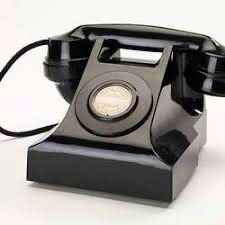


15 August 2025
Telecommunications
Engineers
15 Aug 2025
Telecommunications
Engineers


The History of The Telephone in Australia
The history of the telephone in Australia begins shortly after the invention of the telephone by Alexander Graham Bellin 1876. Australia’s adoption and development of telephone technology followed rapidly, playing a significant role in connecting the vast and often isolated population. Here’s an overview of its evolution:
The telephone was first demonstrated in Melbourne by Henry Sutton, an Australian inventor, only a year after Bell’s invention.
Around the same time, interested individuals and companies began experimenting with telephone technology.
Australia’s first telephone exchange opened in Melbourne in 1880, managed by the Victorian Telephone Exchange Company.
Soon after, exchanges opened in Sydney (1881), Brisbane (1882), and other capital cities.
Telephone networks spread across major cities and towns, with thousands of subscribers.
Lines were initially overhead wires, which were vulnerable to weather and required regular maintenance.
With Federation, responsibility for postal and telecommunications services transferred to the federal government.
The PMG was created to manage mail and telecommunication services, including the telephone.
Efforts began to expand the network to rural and remote areas.
Manual exchanges were the norm, requiring operators to connect calls.
Introduction of automatic exchanges, starting in Geelong (1912) and more broadly in the 1920s, improved efficiency.
Use of trunk lines allowed long-distance calling between cities.
Huge growth in telephone subscriptions as Australia’s economy expanded.
Introduction of STD (Subscriber Trunk Dialling) in the 1950s allowed users to dial long-distance numbers without an operator.
Australia connected to international telephone networks via undersea cables and satellite technology.
First trans-Pacific telephone cable (COMPAC) opened in 1963.
The PMG was split into Australia Post and Telecom Australia.
Telecom oversaw all telephone and telecommunications infrastructure.
Transition from analog to digital switching systems began.
Push-button phones replaced rotary dial.
Introduction of mobile telephony and early experiments with data transmission.
Telecom became Telstra, and the telecommunications market was opened to competition.
Optus launched as a competitor, followed by others like Vodafone.
Massive growth in mobile phone use.
Emergence of VoIP (Voice over Internet Protocol) and the decline of landlines.
Introduction of the National Broadband Network (NBN) aimed to modernize fixed-line services with high-speed internet and voice over broadband.
Landlines have declined significantly, replaced by mobile phones and internet-based communication.
Telstra, Optus, and TPG are major players, alongside a variety of smaller providers.
Australia’s vast geography continues to present challenges for remote communication, but satellite and mobile technologies are helping bridge the gap.
Year
Event
1877
First telephone demonstration in Australia
1880
First telephone exchange in Melbourne
1901
PMG takes control of national telephony
1912
First automatic exchange (Geelong)
1975
Telecom Australia formed
1991
Deregulation begins; Telstra and Optus
2010s
NBN rollout begins
2020s
Widespread mobile and internet-based telephony
Would you like a timeline graphic or a printable version (e.g., PDF or Word)?

Crawler Crane Operator
1986 Started off working at New Oakliegh Motors as a new car Detailer. Then 1987 completed becoming a flying instructor course at Civil Flying School Moorabbin. In 1991 worked at Dial a Transport as a truck driver. Then in 1994 I purchased a truck and worked as a subcontractor for Westfi, Amerind then Glen Cameron’s Transport. In 2000 purchased a crane truck and started Powerful Crane Trucks built that up and was sold in 2017. In 2018 started Compact Crawler Cranes
Are you sure want to log out?
Allowed image types: JPG, JPEG, PNG, and WEBP
Allowed image types: JPG, JPEG, PNG, and WEBP
Allowed video types: MP4, MOV, and WEBM.